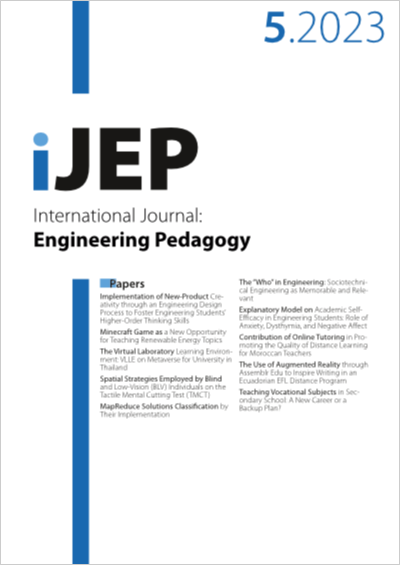Implementation of New-Product Creativity through an Engineering Design Process to Foster Engineering Students’ Higher-Order Thinking Skills
DOI:
https://doi.org/10.3991/ijep.v13i5.38863Keywords:
higher-order thinking skills, engineering design process, engineering educationAbstract
Many studies in engineering education believe that higher-order thinking skills (HOTs) are a fundamental competency for engineering students. Polymer engineering students study and analyze the character and structure of polymer materials and use that knowledge to design innovative new products. However, students might need more applied contexts to creativity and learning motivation in polymer material instruction. This paper is a study to present new-product creativity (NPC) through the engineering design process (EDP) for polymer engineering students. The quasi-experimental design was implemented in the learning activity of the polymer-processing laboratory course. A total of 21 participants were recruited from two groups of students (10 were in the experimental group, and 11 were in the control group) at a university in Thailand. The experimental results showed that the students who learned with NPC-EDP had better HOTs in the polymer-processing laboratory course than those who learned with conventional learning. In addition, the students also showed that they were motivated to learn meaningfully in engineering education.
Downloads
Published
How to Cite
Issue
Section
License
Copyright (c) 2023 Sasithorn Chookaew, Teeratat Sopakitiboon, Surakit Tuampoemsa, Suppachai Howimanporn

This work is licensed under a Creative Commons Attribution 4.0 International License.



